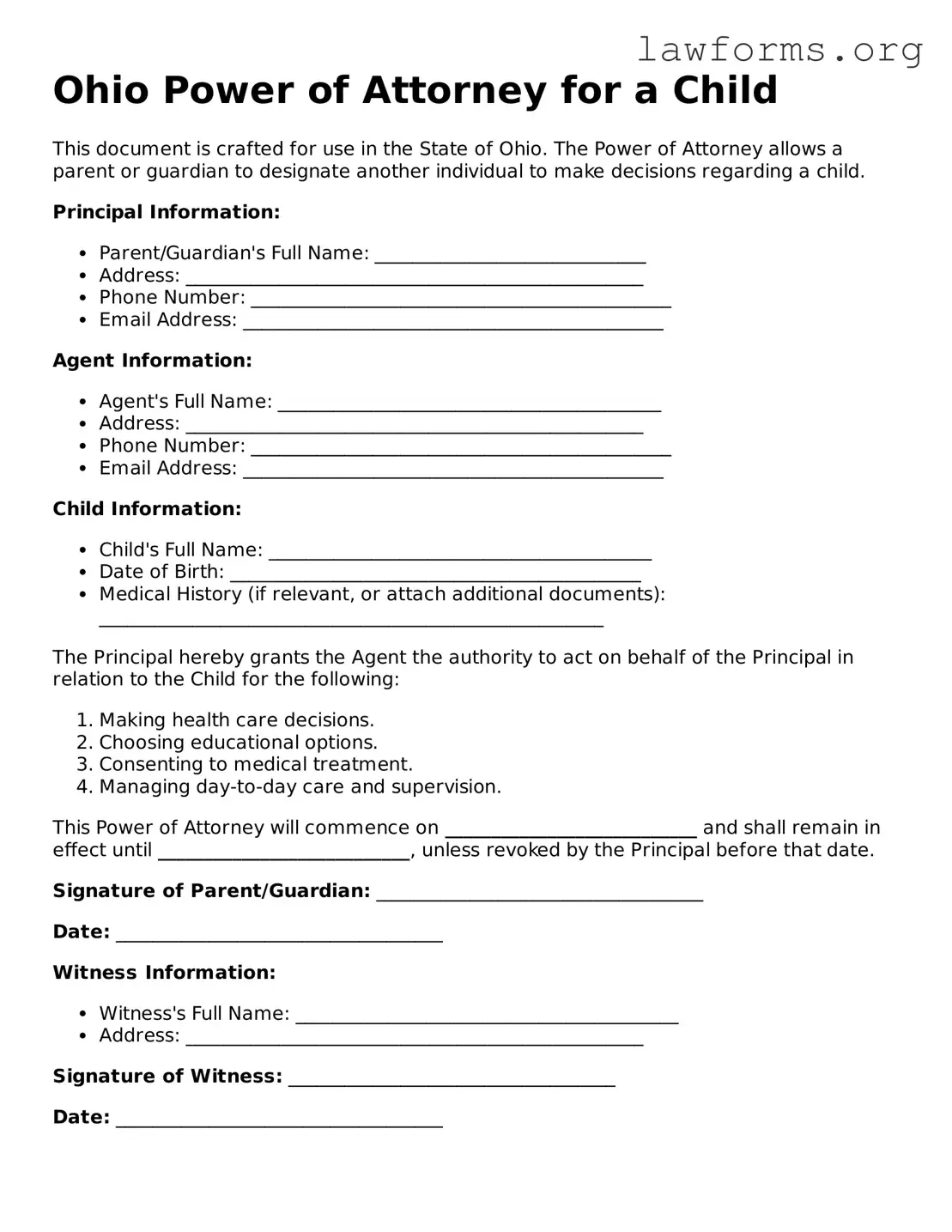Ohio Power of Attorney for a Child
This document is crafted for use in the State of Ohio. The Power of Attorney allows a parent or guardian to designate another individual to make decisions regarding a child.
Principal Information:
- Parent/Guardian's Full Name: _____________________________
- Address: _________________________________________________
- Phone Number: _____________________________________________
- Email Address: _____________________________________________
Agent Information:
- Agent's Full Name: _________________________________________
- Address: _________________________________________________
- Phone Number: _____________________________________________
- Email Address: _____________________________________________
Child Information:
- Child's Full Name: _________________________________________
- Date of Birth: ____________________________________________
- Medical History (if relevant, or attach additional documents): ______________________________________________________
The Principal hereby grants the Agent the authority to act on behalf of the Principal in relation to the Child for the following:
- Making health care decisions.
- Choosing educational options.
- Consenting to medical treatment.
- Managing day-to-day care and supervision.
This Power of Attorney will commence on ___________________________ and shall remain in effect until ___________________________, unless revoked by the Principal before that date.
Signature of Parent/Guardian: ___________________________________
Date: ___________________________________
Witness Information:
- Witness's Full Name: _________________________________________
- Address: _________________________________________________
Signature of Witness: ___________________________________
Date: ___________________________________
This document should be kept in a safe place and a copy provided to all relevant parties involved in the child’s care.
